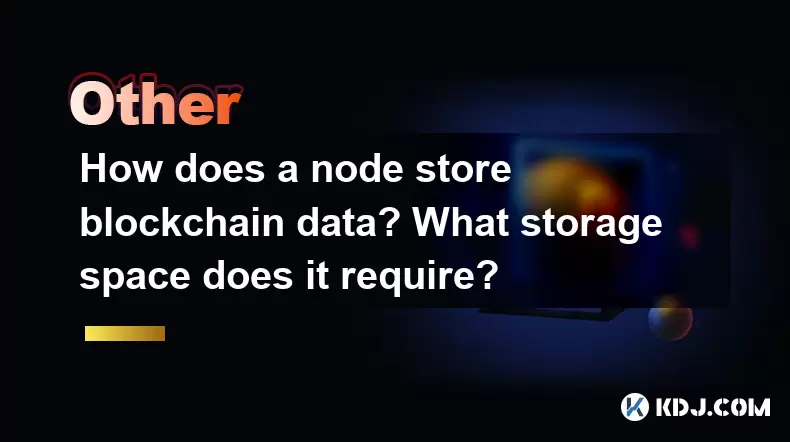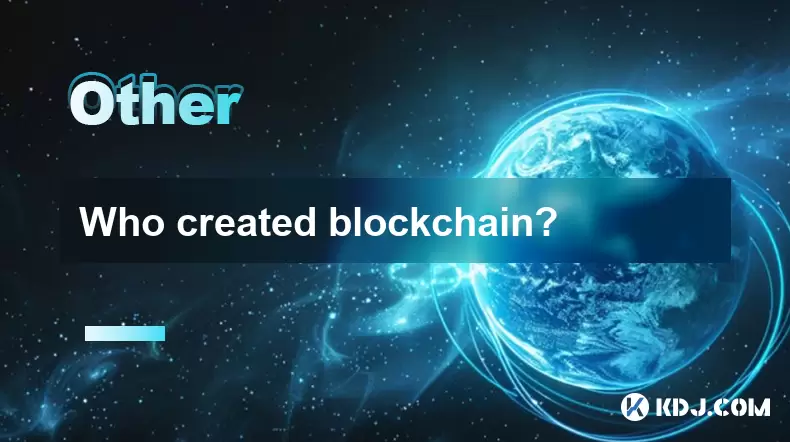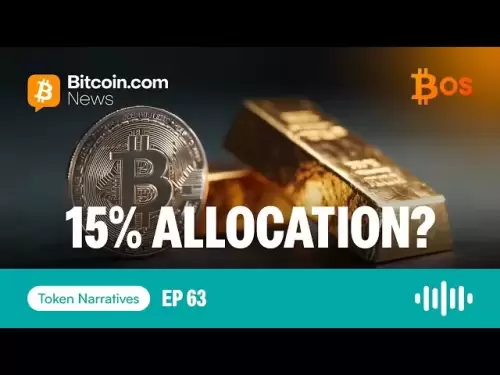-
 Bitcoin
Bitcoin $115200
-2.68% -
 Ethereum
Ethereum $3601
-5.16% -
 XRP
XRP $3.035
-2.96% -
 Tether USDt
Tether USDt $0.9997
-0.04% -
 BNB
BNB $764.5
-5.43% -
 Solana
Solana $168.1
-5.92% -
 USDC
USDC $0.9998
-0.02% -
 Dogecoin
Dogecoin $0.2090
-4.80% -
 TRON
TRON $0.3272
-0.49% -
 Cardano
Cardano $0.7306
-5.00% -
 Hyperliquid
Hyperliquid $39.16
-12.22% -
 Stellar
Stellar $0.3967
-4.96% -
 Sui
Sui $3.566
-5.95% -
 Chainlink
Chainlink $16.55
-6.57% -
 Bitcoin Cash
Bitcoin Cash $552.3
-3.90% -
 Hedera
Hedera $0.2516
-4.69% -
 Avalanche
Avalanche $21.99
-5.75% -
 Toncoin
Toncoin $3.621
-0.28% -
 Ethena USDe
Ethena USDe $1.000
-0.03% -
 UNUS SED LEO
UNUS SED LEO $8.951
0.02% -
 Litecoin
Litecoin $105.9
-3.59% -
 Shiba Inu
Shiba Inu $0.00001232
-5.00% -
 Polkadot
Polkadot $3.640
-5.55% -
 Uniswap
Uniswap $9.048
-7.03% -
 Monero
Monero $301.8
-1.51% -
 Dai
Dai $0.9999
-0.01% -
 Bitget Token
Bitget Token $4.334
-3.66% -
 Pepe
Pepe $0.00001064
-6.17% -
 Cronos
Cronos $0.1367
-5.78% -
 Aave
Aave $259.2
-4.59%
How does a node store blockchain data? What storage space does it require?
Full nodes store entire blockchains, requiring 300-600 GB for Bitcoin/Ethereum; light nodes use less space, while archival nodes need terabytes for historical data.
May 16, 2025 at 03:42 pm

Introduction to Blockchain Nodes and Data Storage
A blockchain node is a crucial component of any decentralized network. It plays an essential role in maintaining and validating the integrity of the blockchain. Nodes store blockchain data, which includes transactions, blocks, and other relevant information. Understanding how a node stores this data and the storage space it requires is vital for anyone interested in running a node or exploring the technical aspects of blockchain technology.
Types of Blockchain Nodes
There are various types of blockchain nodes, each with different functions and storage requirements. The primary types include:
- Full Nodes: These nodes store the entire blockchain and validate all transactions and blocks. They require the most storage space.
- Light Nodes: Also known as SPV (Simplified Payment Verification) nodes, they store only the block headers and rely on full nodes for transaction validation. They require significantly less storage space.
- Archival Nodes: These are a type of full node that stores not only the current state of the blockchain but also all historical states. They have the highest storage requirements.
- Pruned Nodes: These nodes start as full nodes but can delete older data to save space, keeping only the most recent blocks and transactions.
How a Node Stores Blockchain Data
Full nodes store the entire blockchain by maintaining a complete copy of all blocks and transactions. Each block contains a list of transactions, a timestamp, and a reference to the previous block (the hash of the previous block). This structure forms a chain of blocks, hence the name "blockchain." The data is typically stored in a database, with each block and transaction being indexed for quick access and verification.
Light nodes store only the block headers, which contain essential information such as the block hash, the previous block hash, the Merkle root (a hash of all transactions in the block), and the timestamp. Light nodes do not store the full transaction data but can still verify transactions by requesting additional information from full nodes when needed.
Archival nodes store not only the current state of the blockchain but also all historical states. This means they keep every version of every block and transaction ever recorded on the blockchain. This comprehensive storage allows for detailed historical analysis but requires significantly more storage space than a full node.
Pruned nodes initially store the entire blockchain like full nodes. However, they can be configured to delete older data after a certain period, keeping only the most recent blocks and transactions. This pruning process reduces the storage space required while still allowing the node to validate new transactions and blocks.
Storage Space Requirements for Different Node Types
The storage space required for a node depends on the type of node and the blockchain it is part of. Here's a breakdown of the storage requirements for different types of nodes:
Full Nodes: The storage space required for a full node can vary significantly depending on the blockchain. For example, the Bitcoin blockchain requires around 300-400 GB of storage space as of early 2023. Ethereum, on the other hand, requires around 500-600 GB. These numbers can increase over time as more blocks and transactions are added to the blockchain.
Light Nodes: Light nodes require significantly less storage space. For instance, a Bitcoin light node might require only a few hundred megabytes of storage space, as it stores only the block headers and not the full transaction data.
Archival Nodes: Archival nodes have the highest storage requirements. For example, an Ethereum archival node might require several terabytes of storage space, as it stores all historical states of the blockchain.
Pruned Nodes: The storage space required for a pruned node depends on how much data is kept. For example, a Bitcoin pruned node might require around 5-10 GB of storage space, depending on the configuration and how much historical data is retained.
Factors Affecting Storage Space Requirements
Several factors can affect the storage space requirements for a node:
Blockchain Size: The size of the blockchain itself is the most significant factor. As more blocks and transactions are added, the blockchain grows, and so do the storage requirements for full and archival nodes.
Data Compression: Some blockchain implementations use data compression techniques to reduce the size of the stored data. This can help reduce the storage space required but may also increase the computational resources needed to decompress the data when needed.
Database Efficiency: The efficiency of the database used to store the blockchain data can also impact storage requirements. Some databases are more efficient at storing and retrieving data, which can help reduce the overall storage space needed.
Pruning Settings: For pruned nodes, the settings that determine how much historical data to keep can significantly affect storage space requirements. More aggressive pruning will result in less storage space needed but may limit the node's ability to provide historical data.
Setting Up a Node: A Step-by-Step Guide
Setting up a node involves several steps, depending on the type of node and the blockchain. Here's a general guide for setting up a Bitcoin full node:
Download the Bitcoin Core Software: Visit the official Bitcoin website and download the Bitcoin Core software for your operating system.
Install the Software: Follow the installation instructions provided with the software. This usually involves running an installer and following the prompts.
Configure the Node: After installation, you can configure the node by editing the
bitcoin.conffile. This file allows you to set various parameters, such as the data directory and whether to enable pruning.Start the Node: Launch the Bitcoin Core software. It will begin downloading and verifying the entire Bitcoin blockchain, which can take several days depending on your internet connection and hardware.
Monitor the Node: Once the initial synchronization is complete, the node will continue to run and stay up-to-date with the blockchain. You can monitor its status and performance using the built-in tools provided by the software.
Frequently Asked Questions
Q: Can I run a node on a cloud server?
A: Yes, you can run a node on a cloud server. Many cloud providers offer virtual machines that can be configured to run blockchain nodes. However, you should consider the costs, as running a node, especially a full or archival node, can require significant storage and bandwidth resources.
Q: How can I reduce the storage space required for my node?
A: To reduce the storage space required for your node, you can consider running a light node or a pruned node. Pruned nodes allow you to delete older data, which can significantly reduce the storage space needed. Additionally, some blockchains offer data compression options that can help reduce storage requirements.
Q: What happens if my node runs out of storage space?
A: If your node runs out of storage space, it will stop functioning correctly. For full and archival nodes, this means they will no longer be able to validate new transactions and blocks. For pruned nodes, running out of space can cause issues with the pruning process, potentially leading to data loss or corruption. It's essential to monitor your node's storage usage and ensure you have enough space to accommodate the growing blockchain.
Q: Can I switch from a full node to a pruned node after it's already set up?
A: Yes, you can switch from a full node to a pruned node after it's already set up. This involves modifying the node's configuration file to enable pruning and then restarting the node. The node will then begin to delete older data according to the pruning settings you've specified. However, this process can be time-consuming and may temporarily affect the node's performance.
Disclaimer:info@kdj.com
The information provided is not trading advice. kdj.com does not assume any responsibility for any investments made based on the information provided in this article. Cryptocurrencies are highly volatile and it is highly recommended that you invest with caution after thorough research!
If you believe that the content used on this website infringes your copyright, please contact us immediately (info@kdj.com) and we will delete it promptly.
- Dogecoin's Price Support Under Fire: Can It Fend Off Competitors?
- 2025-08-02 04:30:12
- AI Cloud Mining: How AIXA Miners is Empowering Young Investors
- 2025-08-02 04:30:12
- Crypto Spotlight: Rollblock's Rise, Ripple's Resistance, and What It Means for Your Portfolio
- 2025-08-02 04:50:12
- Crypto's Golden Age: Tether Gold, Institutional BTC, and the Future of Finance
- 2025-08-02 04:50:12
- VeChain, Unilabs, XRP: Decoding August's Crypto Moves
- 2025-08-02 04:55:43
- Bitcoin, Whales, and Profit: Decoding Crypto's Latest Moves
- 2025-08-02 04:55:43
Related knowledge

What is the difference between a blockchain and a database?
Aug 01,2025 at 09:36pm
Understanding the Core Structure of a BlockchainA blockchain is a decentralized digital ledger that records data in a series of immutable blocks linke...

What is a hash in a blockchain?
Aug 02,2025 at 05:28am
Understanding the Concept of Hash in BlockchainA hash in the context of blockchain technology refers to a unique digital fingerprint generated by a cr...

What is a hash in a blockchain?
Aug 02,2025 at 04:43am
Understanding the Concept of Hash in BlockchainA hash in the context of blockchain technology refers to a unique digital fingerprint generated by a cr...

Who created blockchain?
Aug 02,2025 at 05:15am
What Is Blockchain and Why Does Its Origin Matter?Understanding who created blockchain begins with recognizing what blockchain actually is. Blockchain...

How to start a business using blockchain?
Jul 28,2025 at 12:36am
Understanding the Basics of Blockchain TechnologyBefore diving into the process of starting a business using blockchain, it's crucial to understand wh...

What is a token on the blockchain?
Jul 21,2025 at 07:00am
Understanding the Concept of a TokenIn the realm of blockchain technology, a token is a digital representation of an asset or utility that exists on a...

What is the difference between a blockchain and a database?
Aug 01,2025 at 09:36pm
Understanding the Core Structure of a BlockchainA blockchain is a decentralized digital ledger that records data in a series of immutable blocks linke...

What is a hash in a blockchain?
Aug 02,2025 at 05:28am
Understanding the Concept of Hash in BlockchainA hash in the context of blockchain technology refers to a unique digital fingerprint generated by a cr...

What is a hash in a blockchain?
Aug 02,2025 at 04:43am
Understanding the Concept of Hash in BlockchainA hash in the context of blockchain technology refers to a unique digital fingerprint generated by a cr...

Who created blockchain?
Aug 02,2025 at 05:15am
What Is Blockchain and Why Does Its Origin Matter?Understanding who created blockchain begins with recognizing what blockchain actually is. Blockchain...

How to start a business using blockchain?
Jul 28,2025 at 12:36am
Understanding the Basics of Blockchain TechnologyBefore diving into the process of starting a business using blockchain, it's crucial to understand wh...

What is a token on the blockchain?
Jul 21,2025 at 07:00am
Understanding the Concept of a TokenIn the realm of blockchain technology, a token is a digital representation of an asset or utility that exists on a...
See all articles

























































































